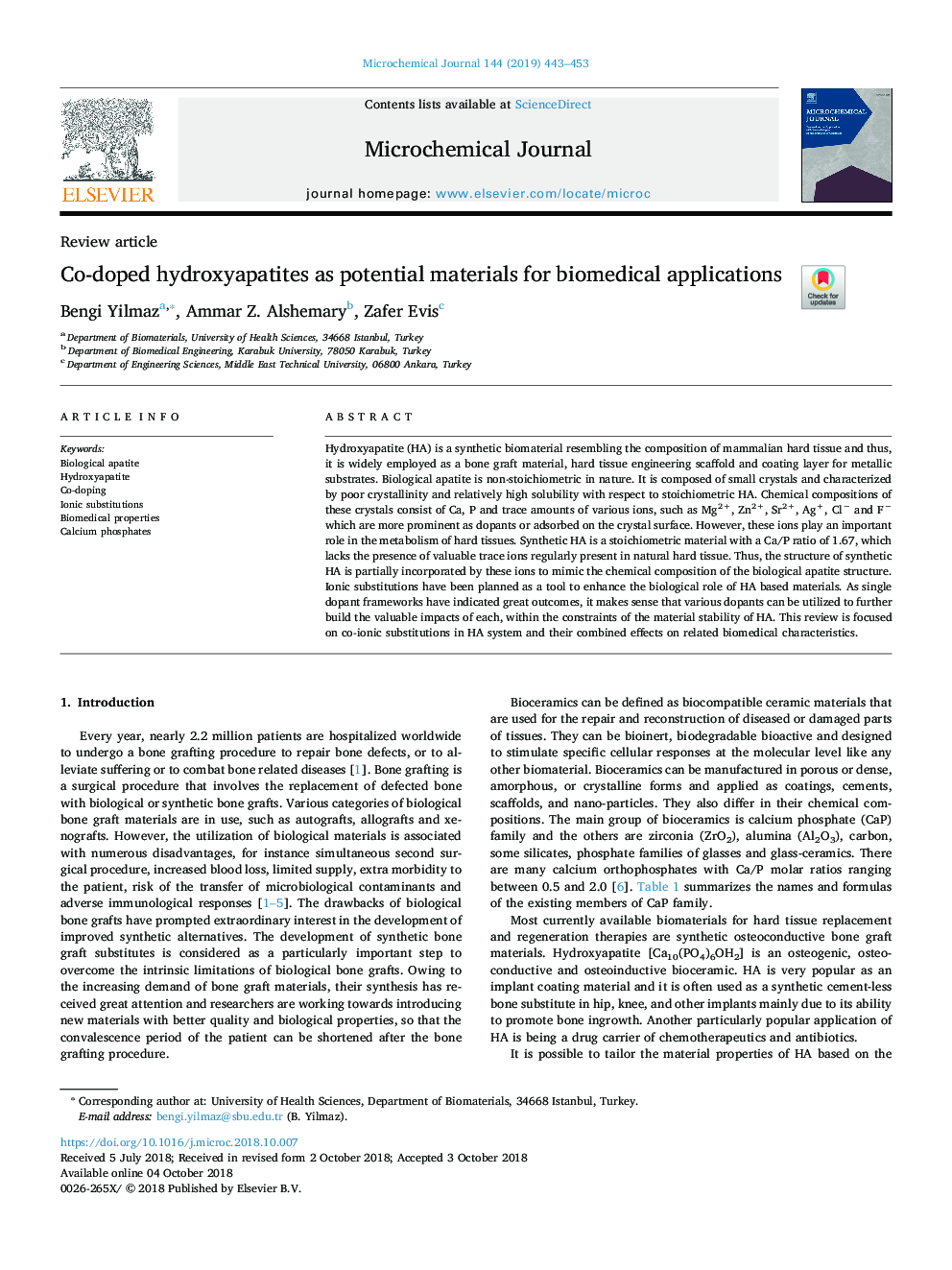| کد مقاله | کد نشریه | سال انتشار | مقاله انگلیسی | نسخه تمام متن |
|---|---|---|---|---|
| 11031242 | 1646048 | 2019 | 11 صفحه PDF | دانلود رایگان |
عنوان انگلیسی مقاله ISI
Co-doped hydroxyapatites as potential materials for biomedical applications
ترجمه فارسی عنوان
هیدروکسی آپاتیت های یکپارچه به عنوان مواد بالقوه برای کاربردهای بیومدیکال
دانلود مقاله + سفارش ترجمه
دانلود مقاله ISI انگلیسی
رایگان برای ایرانیان
کلمات کلیدی
آپاتیت زیستی، هیدروکسی آپاتیت، دوپینگ، جایگزینی یونی، خواص بیومدیکال، فسفات کلسیم،
موضوعات مرتبط
مهندسی و علوم پایه
شیمی
شیمی آنالیزی یا شیمی تجزیه
چکیده انگلیسی
Hydroxyapatite (HA) is a synthetic biomaterial resembling the composition of mammalian hard tissue and thus, it is widely employed as a bone graft material, hard tissue engineering scaffold and coating layer for metallic substrates. Biological apatite is non-stoichiometric in nature. It is composed of small crystals and characterized by poor crystallinity and relatively high solubility with respect to stoichiometric HA. Chemical compositions of these crystals consist of Ca, P and trace amounts of various ions, such as Mg2+, Zn2+, Sr2+, Ag+, Clâ and Fâ which are more prominent as dopants or adsorbed on the crystal surface. However, these ions play an important role in the metabolism of hard tissues. Synthetic HA is a stoichiometric material with a Ca/P ratio of 1.67, which lacks the presence of valuable trace ions regularly present in natural hard tissue. Thus, the structure of synthetic HA is partially incorporated by these ions to mimic the chemical composition of the biological apatite structure. Ionic substitutions have been planned as a tool to enhance the biological role of HA based materials. As single dopant frameworks have indicated great outcomes, it makes sense that various dopants can be utilized to further build the valuable impacts of each, within the constraints of the material stability of HA. This review is focused on co-ionic substitutions in HA system and their combined effects on related biomedical characteristics.
ناشر
Database: Elsevier - ScienceDirect (ساینس دایرکت)
Journal: Microchemical Journal - Volume 144, January 2019, Pages 443-453
Journal: Microchemical Journal - Volume 144, January 2019, Pages 443-453
نویسندگان
Bengi Yilmaz, Ammar Z. Alshemary, Zafer Evis,
